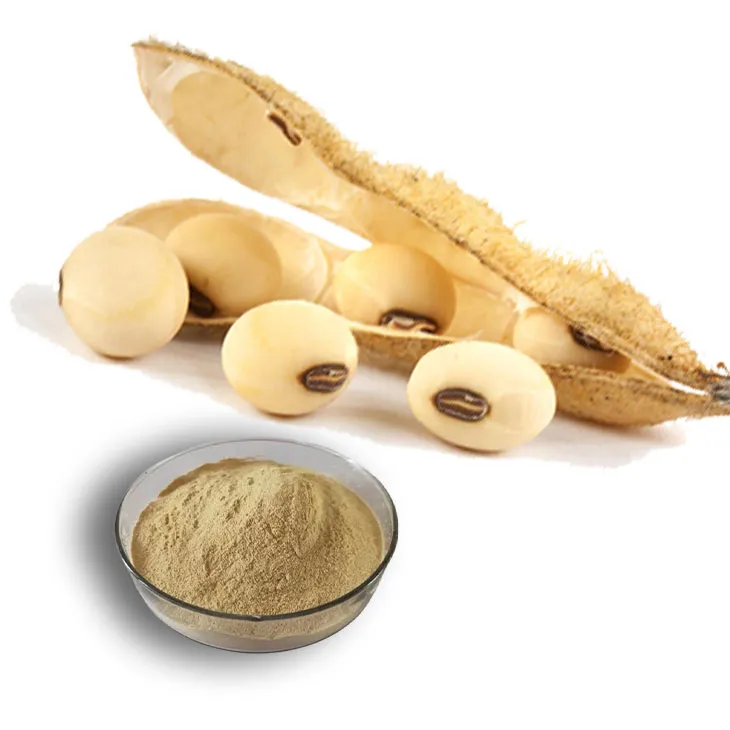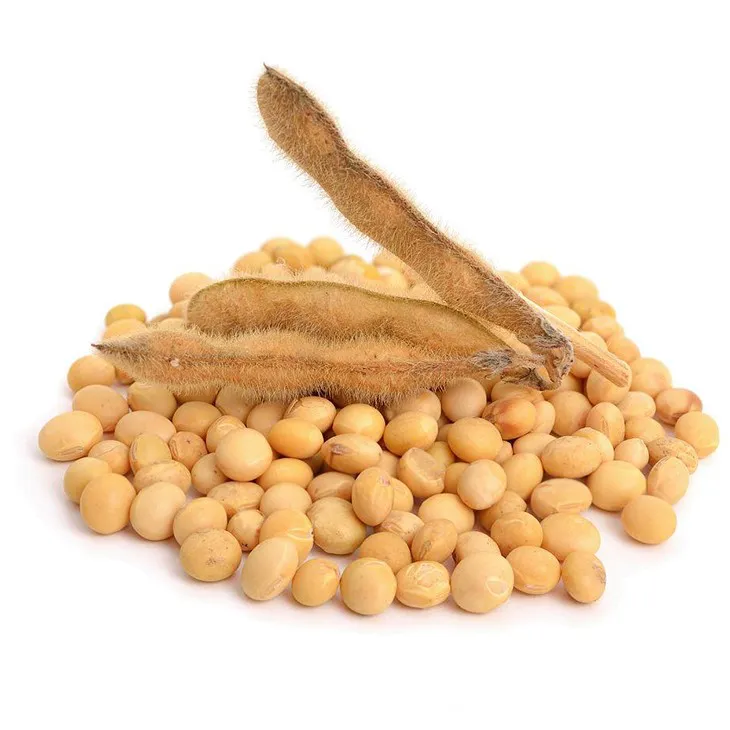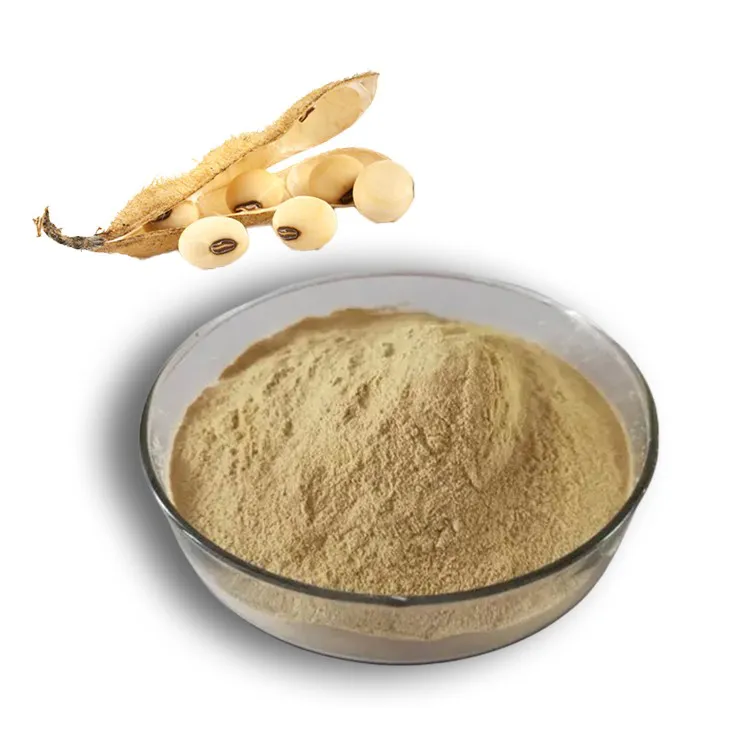- 0086-571-85302990
- sales@greenskybio.com
Nutritional Powerhouse: The Health Benefits of Soy Extract
2024-07-04

Introduction
Soy Extract has emerged as a remarkable ingredient in the world of nutrition. It is derived from soybeans, which have been a staple in many Asian diets for centuries. In recent years, the Western world has also started to recognize the numerous health benefits associated with Soy Extract. This substance is rich in a variety of nutrients that work together to promote overall well - being.

1. Nutritional Composition of Soy Extract
Proteins: Soy extract is an excellent source of high - quality plant - based protein. It contains all the essential amino acids required by the human body, making it a complete protein source for vegetarians and vegans. These proteins play a crucial role in building and repairing tissues, as well as in the production of enzymes and hormones.
Fiber: Another important component of soy extract is dietary fiber. Fiber is essential for maintaining a healthy digestive system. It helps prevent constipation by adding bulk to the stool and promoting regular bowel movements. Additionally, fiber can also help in reducing cholesterol levels by binding to bile acids in the intestine and excreting them from the body.
Phytonutrients: Soy extract is rich in phytonutrients such as isoflavones. Isoflavones are a type of plant - based compound that has antioxidant properties. They can help protect the body against oxidative stress caused by free radicals, which are unstable molecules that can damage cells and contribute to various diseases, including cancer and heart disease.
Vitamins and Minerals: Soy extract also contains a range of vitamins and minerals. It is a good source of vitamin K, which is important for blood clotting and bone health. Additionally, it contains minerals such as calcium, iron, and magnesium. Calcium is essential for strong bones and teeth, while iron is necessary for the production of red blood cells, and magnesium plays a role in many enzymatic reactions in the body.

2. Health Benefits of Soy Extract
2.1 Heart Health
One of the most significant health benefits of soy extract is its positive impact on heart health. Studies have shown that consuming soy extract can help lower LDL (low - density lipoprotein) cholesterol levels, also known as "bad" cholesterol. By reducing LDL cholesterol, soy extract can decrease the risk of developing heart disease.
The isoflavones in soy extract may also have a beneficial effect on blood vessels. They can help relax the blood vessels, reducing blood pressure. High blood pressure is a major risk factor for heart disease, stroke, and other cardiovascular problems.
Additionally, the fiber in soy extract can help in reducing overall cholesterol levels. By binding to cholesterol in the digestive tract and preventing its absorption into the bloodstream, fiber can contribute to a healthier lipid profile.
2.2 Hormonal Balance
Soy extract isoflavones have a unique ability to interact with the body's hormonal system. For women, especially during menopause, soy extract can provide relief from some of the symptoms associated with hormonal changes.
During menopause, estrogen levels decline, leading to symptoms such as hot flashes, night sweats, and mood swings. The isoflavones in soy extract have a structure similar to estrogen and can bind to estrogen receptors in the body. This can have a mild estrogen - like effect, helping to alleviate some of these menopausal symptoms.
However, it is important to note that the effects of soy extract on hormonal balance are complex and may vary from person to person. Some studies have also raised concerns about the potential long - term effects of soy isoflavones on breast tissue, although the evidence is not conclusive.
2.3 Cancer Prevention
The antioxidant properties of the phytonutrients in soy extract, particularly isoflavones, may play a role in cancer prevention. Free radicals can damage DNA, which can lead to mutations and the development of cancer. By scavenging free radicals, isoflavones can help protect cells from this damage.
Some studies have suggested that soy extract may be particularly beneficial in reducing the risk of breast cancer. However, the relationship between soy consumption and breast cancer risk is still a topic of ongoing research. Some research has indicated that the timing of soy consumption may be important. For example, consuming soy during childhood and adolescence may be more protective against breast cancer than starting to consume it later in life.
In addition to breast cancer, soy extract may also have potential benefits in reducing the risk of other cancers, such as prostate cancer in men. The isoflavones in soy can interfere with the growth and spread of cancer cells in the prostate gland.
2.4 Bone Health
The combination of nutrients in soy extract can contribute to better bone health. Vitamin K, calcium, and isoflavones all play important roles in maintaining strong bones.
Vitamin K is necessary for the activation of proteins involved in bone mineralization. Calcium is a key component of bones, providing the structural framework. Isoflavones in soy extract can help improve bone density, especially in post - menopausal women.
As estrogen levels decline during menopause, women are at increased risk of developing osteoporosis, a condition characterized by weak and brittle bones. The estrogen - like effect of soy isoflavones can help slow down bone loss and reduce the risk of osteoporosis.
2.5 Digestive Health
The fiber content in soy extract is beneficial for digestive health. It promotes regular bowel movements, which helps prevent constipation. A healthy digestive system is essential for the proper absorption of nutrients from food.
Additionally, the fiber in soy extract can act as a prebiotic, feeding the beneficial bacteria in the gut. A balanced gut microbiota is associated with a wide range of health benefits, including improved immune function and reduced inflammation.

3. How to Incorporate Soy Extract into Your Diet
There are several ways to incorporate soy extract into your diet. One of the most common forms of soy extract is soy protein powder. This can be added to smoothies, shakes, or used in baking recipes as a substitute for some of the flour.
Soy milk is another popular option. It can be used as a replacement for dairy milk in cereals, coffee, or tea. Tofu, which is made from soybeans, is a versatile ingredient that can be used in stir - fries, soups, or salads.
Edamame, which are young soybeans, can be eaten as a snack or added to various dishes. Miso, a fermented soy product, is often used in Japanese cuisine to make soups or as a flavoring agent.
4. Precautions and Considerations
While soy extract offers many health benefits, there are some precautions to keep in mind. Some people may be allergic to soy, and consuming soy extract can cause allergic reactions such as hives, itching, or difficulty breathing.
In addition, as mentioned earlier, the effects of soy isoflavones on hormonal balance are still being studied, especially in relation to breast tissue. Pregnant and breastfeeding women may also need to be cautious about consuming large amounts of soy extract, as its effects on fetal development are not fully understood.
If you have a pre - existing medical condition, such as thyroid problems, it is advisable to consult your doctor before incorporating soy extract into your diet. Soy can interfere with thyroid function in some cases, although this is more likely to occur with high - dose soy supplementation.
Conclusion
Soy extract is a nutritional powerhouse with a wide range of health benefits. From improving heart health and hormonal balance to potentially preventing cancer and promoting bone and digestive health, it has much to offer. However, it is important to be aware of the precautions and considerations associated with its consumption. By incorporating soy extract into a balanced diet in a safe and appropriate manner, individuals can take advantage of its many health - promoting properties.
FAQ:
What are the main nutrients in soy extract?
Soy extract is rich in nutrients. It contains high - quality proteins, isoflavones, fiber, vitamins (such as vitamin K), and minerals (like potassium and magnesium). These nutrients contribute to its various health benefits.
How does soy extract improve cholesterol levels?
The isoflavones in soy extract play a key role in improving cholesterol levels. They can help reduce LDL (bad) cholesterol and may also have a positive impact on HDL (good) cholesterol, thus promoting better heart health.
Can soy extract help with hormonal - related issues?
Yes, it can. The isoflavones in soy extract have a similar structure to estrogen. For women, especially during menopause, soy extract may help relieve symptoms such as hot flashes by interacting with estrogen receptors in the body.
Is soy extract suitable for everyone?
Most people can benefit from soy extract. However, some individuals may be allergic to soy products. Also, those with certain hormonal - sensitive cancers may need to consult a doctor before consuming soy extract, as the estrogen - like effects may have implications in these cases.
How can one incorporate soy extract into their diet?
Soy extract can be found in various forms. One can consume soy - based foods like tofu, soy milk, which are natural sources of soy extract. Additionally, there are also soy extract supplements available in the market. However, it's important to follow the recommended dosage if taking supplements.
Related literature
- The Nutritional Value of Soy Extract: A Comprehensive Review"
- "Soy Extract and Heart Health: Evidence from Clinical Studies"
- "Hormonal Effects of Soy Extract in Women: A Meta - Analysis"
- ▶ Hesperidin
- ▶ citrus bioflavonoids
- ▶ plant extract
- ▶ lycopene
- ▶ Diosmin
- ▶ Grape seed extract
- ▶ Sea buckthorn Juice Powder
- ▶ Beetroot powder
- ▶ Hops Extract
- ▶ Artichoke Extract
- ▶ Reishi mushroom extract
- ▶ Astaxanthin
- ▶ Green Tea Extract
- ▶ Curcumin Extract
- ▶ Horse Chestnut Extract
- ▶ Other Problems
- ▶ Boswellia Serrata Extract
- ▶ Resveratrol Extract
- ▶ Marigold Extract
- ▶ Grape Leaf Extract
- ▶ blog3
- ▶ Aminolevulinic acid
- ▶ Cranberry Extract
- ▶ Red Yeast Rice
- ▶ Red Wine Extract
-
Thunder God Vine Extract
2024-07-04
-
Red Wine Extract
2024-07-04
-
Fig Extract
2024-07-04
-
Ivy Extract
2024-07-04
-
Bilberry Extract
2024-07-04
-
Troxerutin
2024-07-04
-
Medicinal Marshmallow Extract
2024-07-04
-
Peppermint Extract Powder
2024-07-04
-
Mango flavored powder
2024-07-04
-
Sophora Japonica Flower Extract
2024-07-04





















